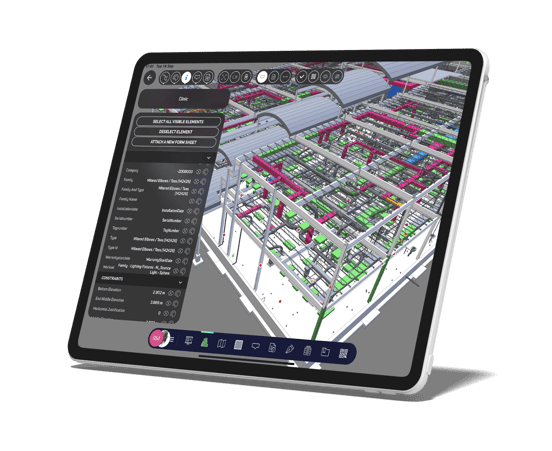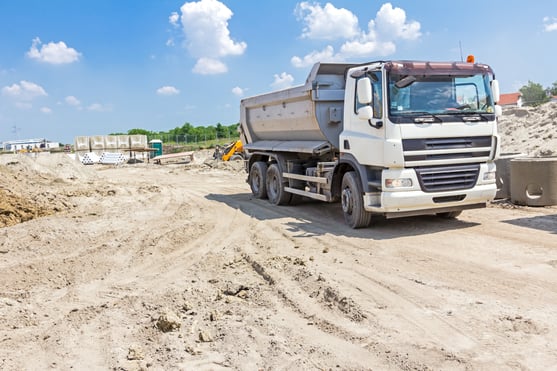Construction site Documents Environment
Published on
Rationalising materials in construction thanks to digital technology

The construction sector is changing apace. Projects are becoming ever more complex and costly. Now, this is an industry in which budget control is paramount – for a project to properly succeed, it must be possible for teams to correctly manage expenditure. Unfortunately, the price of materials has soared in recent years, and this trend looks set to continue at a time of inflation. In light of that, rationalising the materials used in construction by digitising processes is an appropriate solution. For digital technology can help to keep construction projects profitable, rationalise spending and contribute to a greener future. Find out how below.
More accurately estimating the quantities of materials required for each project
Each construction project begins with quantity surveying. The resulting schedule of quantities (typically in table format) outlines the amount of material required for the building project. It includes different sections listing all of the components of the construction or renovation project.
The schedule of quantities provides a clearer overview of the building project as a whole and allows the future requirements to be determined as accurately as possible. This reduces the risk of unexpected needs and additional costs. It is also easier for the project owner to compare different cost estimates by cross-checking the schedules of quantities.
For a long time, these schedules of quantities were usually drawn up using spreadsheets. But nowadays there are much more advanced software programs for reporting these requirements directly on a single, accessible and user-friendly digital platform. All project datasets are thus centralised and their analysis more straightforward. Thanks to this digital solution, the teams know exactly how much concrete, timber, aluminium, etc. they need for each building project. The estimates are more accurate and, above all, there are no nasty surprises.
 Reducing the volume of materials required to reduce the number of truck journeys to the site
Reducing the volume of materials required to reduce the number of truck journeys to the site
On a construction site, the building materials (aggregates, concrete, sand, etc.) tend to be transported by road haulage. This is often the most cost-effective solution. And yet the transportation of materials has major economic and environmental implications, and it is therefore important to optimise each journey.
First, it is preferable to look for locally sourced materials to cut transport costs, journey length and therefore the carbon footprint of each project. Then, efforts should be made to optimise truck load capacity and more effectively plan deliveries to avoid unnecessary journeys which generate additional CO2 emissions. Finally, it is preferable to reduce the volume of materials required so that material transportation to the site can be reduced.
All of this can be achieved, yet again, by estimating projects’ requirements in terms of materials as accurately as possible. By ordering fewer raw materials or, at the very least, by ordering only the quantity required, no more, it is possible to reduce the number of truck journeys to the building site and therefore the associated CO2 emissions. In turn, this will reduce the number of truck journeys post-construction. For if the exact amount of materials has been delivered, there will be less waste to recover afterwards.
 Improving teamwork to reduce rework in construction
Improving teamwork to reduce rework in construction
Generally speaking, using the right digital tools paves the way to better collaboration between design offices and contractors in charge of the performance of the work. This is because performance plans can be used more reliably thanks to digital technology. These plans are updated in real time, at regular intervals, in the software, and can be viewed at any time by team members.
In the same way, it is easier to conduct quality inspections throughout the project and thus to anticipate any defective work, prevent and limit excessive material use. On a final note, digital tools enable teams to interact and work together more effortlessly. They can identify any defects and resolve them faster and more easily. This leaves less room for error, which risks not only leading to unnecessary material use but also driving up costs.
Given the hikes in material prices, any solution which can bring down costs is worth considering! In this regard, a particularly effective solution would be to use existing digital tools for rationalising the materials used and better manage expenditure. Beyond this advantage, thanks to digital technology, teamwork is facilitated and errors can be spotted and corrected quickly, without wider repercussions for the project as a whole.
Rationalising materials in construction via digital technology: everything you need to know
What are the benefits of rationalising the materials used in construction ?
By rationalising the materials used in construction, it is possible to :
- reduce wasteful practices ;
- reduce waste production ;
- make savings.
How can the materials used in construction best be rationalised?
Digital tools can be used to most effectively rationalise the materials used in construction, by more accurately assessing the requirements on-site.

